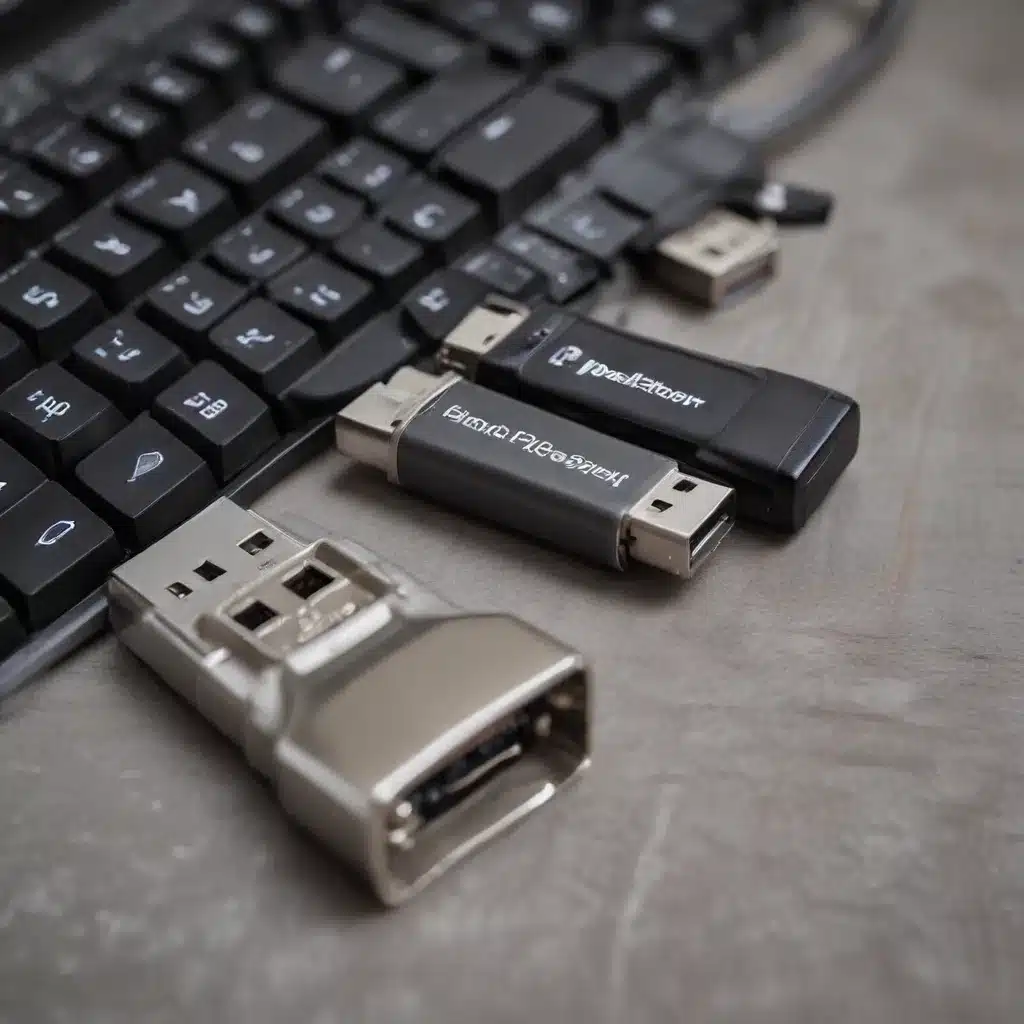
Understanding the Causes of USB Flash Drive Corruption
USB flash drives are convenient and portable storage solutions, but they can be vulnerable to corruption and data loss. Various factors can lead to a corrupted USB flash drive, including:
- Sudden Removal: Unplugging the USB drive before properly ejecting or dismounting it can interrupt data transfer and corrupt the file system.
- Physical Damage: Dropping, exposing the drive to moisture, or other physical trauma can damage the internal components and render the drive unusable.
- Malware Infection: Viruses, malware, or ransomware can target the file system, encrypting or deleting data on the drive.
- Wear and Tear: Over time, the flash memory cells in the drive can wear out, leading to read/write errors and data corruption.
When a USB flash drive becomes corrupted, it can be a frustrating and data-loss-inducing experience. However, with the right approach and professional help, there is often a way to revive the drive and recover your important files.
Troubleshooting Corrupted USB Flash Drives
If you encounter a corrupted USB flash drive, it’s essential to act quickly to minimize the risk of further data loss. Here are some steps you can take to troubleshoot the issue:
1. Identify the Problem
The first step is to determine the extent of the corruption. Try connecting the USB drive to your computer and see if it’s recognized. If the drive is not detected or appears as “unformatted” or “RAW,” it’s a clear sign of corruption.
2. Attempt Basic Fixes
If the USB drive is recognized but the files are inaccessible or appear corrupted, try the following basic fixes:
- Use the Device as a Card Reader: If your camera or other device has a USB port, try connecting the corrupted USB drive directly to it. This can sometimes bypass any issues with the computer’s card reader or USB port.
- Check for Write Protection: Ensure that the write-protection switch on the USB drive is not engaged, as this can prevent you from accessing or modifying the data on the drive.
- Try a Different USB Port or Computer: Plug the USB drive into a different USB port on your computer or try it on another device to rule out any issues with the specific port or computer.
3. Utilize Data Recovery Software
If the basic fixes don’t work, it’s time to consider using data recovery software. There are several reliable and user-friendly tools available, such as:
- Recuva: A free data recovery software from Piriform that can scan and recover files from corrupted or deleted USB drives.
- PhotoRec: A free, open-source data recovery tool that can recover a wide range of file types from various storage devices.
- Disk Drill: A comprehensive data recovery solution that offers both free and paid versions, with advanced features for recovering data from corrupted drives.
These software tools can often scan the corrupted USB drive and retrieve any recoverable files, even if the drive is not recognized by your computer’s operating system.
4. Seek Professional Data Recovery Services
If the data recovery software fails to recover your files or the USB drive appears to be physically damaged, it’s time to consider professional data recovery services. These services employ advanced techniques and specialized equipment to recover data from severely corrupted or physically damaged storage devices.
Some reputable data recovery service providers include:
- DriveSavers: A leading data recovery service with a success rate of over 95% and a team of experienced engineers.
- Secure Data Recovery: A data recovery specialist that offers a wide range of services, including USB flash drive recovery.
- WeRecoverData: A data recovery service that specializes in recovering data from various storage devices, including USB flash drives.
These professional data recovery services often have clean-room facilities and the necessary tools to handle even the most challenging cases of USB flash drive corruption. While the cost can be higher than DIY software solutions, they can be the last resort for recovering critical data.
Preventive Measures to Avoid USB Flash Drive Corruption
To minimize the risk of USB flash drive corruption and data loss, consider the following preventive measures:
- Eject Properly: Always remember to safely eject or dismount the USB drive before unplugging it from your computer. This ensures that any ongoing data transfer is completed before removing the drive.
- Use High-Quality Drives: Invest in reputable USB flash drive brands known for their reliability and durability. Avoid cheap, low-quality alternatives that may be more prone to issues.
- Regularly Back Up Data: Implement a reliable backup strategy for your USB flash drive data, either by regularly copying files to a separate storage device or using cloud-based backup solutions.
- Scan for Malware: Ensure that your computer is equipped with a robust antivirus or anti-malware solution to protect your USB flash drives from potential infections.
- Avoid Excessive Wear and Tear: Handle your USB flash drives with care, avoiding physical shocks, extreme temperatures, and prolonged use that can contribute to wear and tear over time.
By following these preventive measures, you can significantly reduce the risk of USB flash drive corruption and safeguard your valuable data.
Conclusion
Dealing with a corrupted USB flash drive can be a frustrating experience, but with the right approach and professional help, you can often recover your important files. Start by troubleshooting the issue using basic fixes and data recovery software, and if necessary, seek the assistance of experienced data recovery services.
Remember, taking proactive steps to prevent USB flash drive corruption, such as proper ejection, using high-quality drives, and regularly backing up your data, can go a long way in ensuring the long-term reliability and safety of your storage solutions.
For more IT-related tips and insights, be sure to visit the IT Fix blog regularly.












